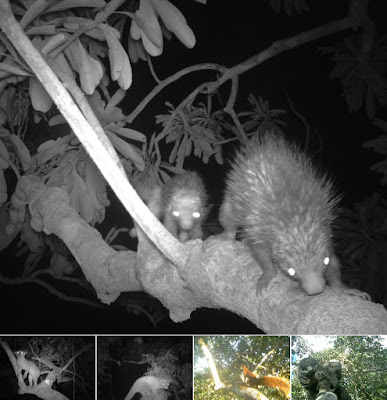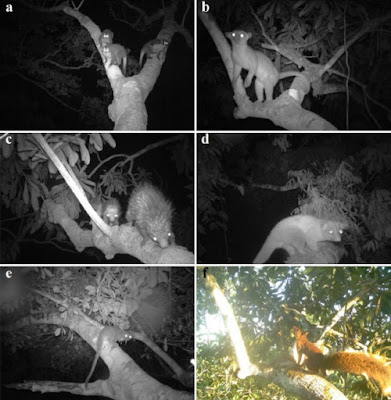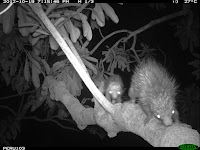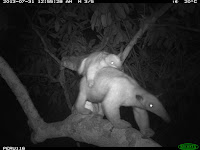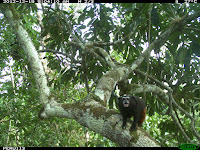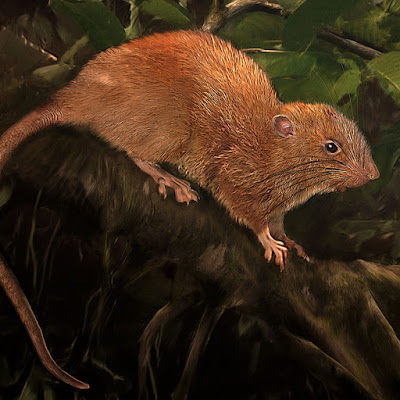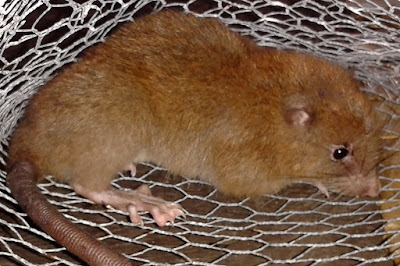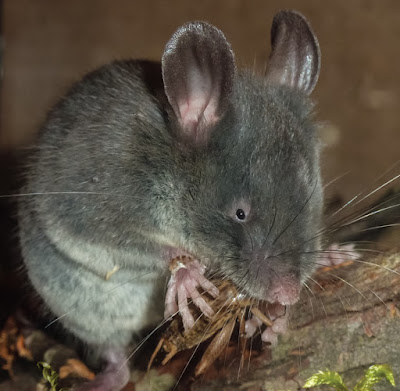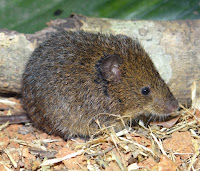 |
| Ototylomys chiapensis Porter, Beasley, Ordóñez-Garza, Lindsey, Rogers, Lewis-Rogers, Sites, & Bradley, 2017 |
Abstract
An allopatric population of big-eared climbing rats (Ototylomys) from the Northern Highlands of Chiapas, Mexico, is described as a new species. The new taxon is part of a unique montane rainforest community that includes several other endemic species in the limited geographic range between the Río Grijalva and the Central Depression of Chiapas. Several cranial, external, and molecular characters distinguish this new species of big-eared climbing rat from its more widely distributed congener, Ototylomys phyllotis. We performed principal component and discriminate function analyses of cranial measurements, and found that specimens of the new species consistently could be distinguished from other Ototylomys with strong statistical support. Compared with exemplars of Ototylomys from elsewhere in their range, the new species possesses a karyotype that differs by 3 additional biarmed chromosome pairs, is fixed or nearly fixed for distinct electromorphs at 12 allozyme loci, and the mean genetic distance exceeds 14%, based on comparisons of the mitochondrial cytochrome b gene between the new species of Ototylomys and representatives of O. phyllotis. The restricted distribution in montane karst rainforest suggests that the species and its habitat may be a matter of conservation concern.
Taxonomy
Family Cricetidae Fischer, 1817
Subfamily Tylomyinae Reig, 1984
Tribe Tylomyini Reig, 1984
Genus Ototylomys Merriam, 1901
Ototylomys chiapensis, new species
La Pera Big-eared Climbing Rat; Rata orejuda trepadora de La Pera
Ototylomys phyllotis connectens: Baker et al. 1971 [1973]:82 (part, faunal report based on a specimen collected in 1969, here reidentified as O. chiapensis).
Ototylomys phyllotis connectens: Hall 1981:629 (part, marginal locality record based on Baker et al. 1971 [1973]).
Ototylomys phyllotis: Lawlor 1982:3 (part, karyotypic report based on Engstrom and Tucker, cited as in litt.).
Ototylomys sp.: Rogers, Engstrom, and Arellano 2004:439 (allozyme data from 2 specimens included in the present study).
Ototylomys sp. nov.: Dudley and Parish 2006:4 (referenced as endemic to El Pozo [= La Pera]).
 |
| Ototylomys chiapensis paratype (MVZ 161246). Photograph by Duke S. Rogers. |
Etymology: The specific name refers to the species distribution in the Mexican state of Chiapas.
Distribution: Known only from the type locality and from 26 km N Ocozocoautla, both in the Mexican state of Chiapas (Figs. 1 and 2). The latter locality is in the municipality of Ocozocoautla de Espinoza at ca. 760 m elevation in the Reserva de la Biosféra Selva El Ocote, and is measured along the “old road” northwest of the city of Ocozocoautla de Espinoza (Johnson et al. 1976; Johnson and Savage 1995; Lamoreux et al. 2015).
Calvin A. Porter, Nia E. Beasley, Nicté Ordóñez-Garza, Laramie L. Lindsey, Duke S. Rogers, Nicole Lewis-Rogers, Jack W. Sites, Jr. and Robert D. Bradley. 2017. A New Species of Big-eared Climbing Rat, Genus Ototylomys (Cricetidae: Tylomyinae), from Chiapas, Mexico. Journal of Mammalogy. 98(5); 1310–1329. DOI: 10.1093/jmammal/gyx096
Una población alopátrica de rata orejuda trepadora (Ototylomys) de las Tierras Altas del Norte de Chiapas, México se describe como una nueva especie. El nuevo taxón es parte de una comunidad única de bosque lluvioso montano que incluye varias especies endémicas en el área de distribución geográfica limitada entre el Río Grijalva y la Depresión Central de Chiapas. Varios caracteres craneales, externos, y moleculares distinguen la nueva rata orejuda trepadora de su congénere más ampliamente distribuido, Ototylomys phyllotis. Se realizaron análisis de componentes principales y de función discriminante de los caracteres craneales, y se encontró que los especímenes de La Pera fueron consistentemente distinguidos de otros Ototylomys con un fuerte soporte estadístico. En comparación con ejemplares de Ototylomys del rango, la nueva especie posee un cariotipo que difiere por 3 pares adicionales de cromosomas biarmados, está fijo o casi fijo por distintos electromorfos en 12 loci alozímicos. Adicionalmente, la media de la distancia genética comparada del gen mitochondrial citocromo b entre la nueva especie de Ototylomys y representantes de O. phyllotis, excede el 14%. La distribución restringida en el bosque lluvioso montano kárstico sugiere que la especie y su hábitat pueden ser de importancia para la conservación.
New rat species discovered, named at Sternberg https://www.hayspost.com/2017/11/16/new-rat-species-discovered-named-at-sternberg/ via @hayspost
---------------------------------------------------------------
روابط التحميل والمشاهدة، الروابط المباشرة للتحميل
او
شاهد هذا الفيديو القصير لطريقة التحميل البسيطة
كيف تحصل على مدونة جاهزة بآلاف المواضيع والمشاركات من هنا
شاهد قناة منتدى مدونات بلوجر جاهزة بألاف المواضيع والمشاركات على اليوتيوب لمزيد من الشرح من هنا
رابط مدونة منتدى مدونات بلوجر جاهزة بآلاف المواضيع والمشاركات في أي وقت حــــتى لو تم حذفها من هنا
شاهد صفحة منتدى مدونات بلوجر جاهزة بألاف المواضيع والمشاركات على الفيس بوك لمزيد من الشرح من هنا
شاهد صفحة منتدى مدونات بلوجر جاهزة بألاف المواضيع والمشاركات على الفيس بوك لمزيد من الشرح من هنا
تعرف على ترتيب مواضيع منتدى مدونات بلوجر جاهزة بآلاف المواضيع والمشاركات (حتى لا تختلط عليك الامور) من هنا
ملاحظة هامة: كل عمليات تنزيل، رفع، وتعديل المواضيع الجاهزة تتم بطريقة آلية، ونعتذر عن اي موضوع مخالف او مخل بالحياء مرفوع بالمدونات الجاهزة بآلاف المواضيع والمشاركات، ولكم ان تقوموا بحذف هذه المواضيع والمشاركات والطريقة بسيطة وسهلة. ــــــــــــــــــــــــــــــــــــــــــــــــــــــــــــــــــــــــــــــسلامـ.





